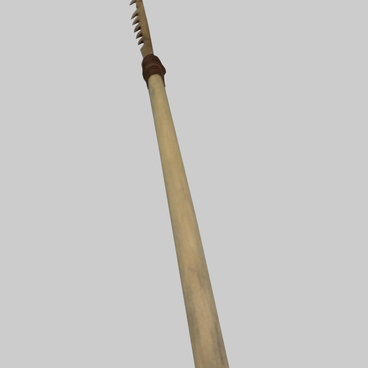Ancient tribes that lived on the territory of the modern Republic of Bashkortostan, learned how to work with metals as early as the 16th century B.C. In very short time frames, they assimilated not only the spaces along large waterways, but also the arid, primal forest steppe and steppe landscapes. Judging by the number of known settlements, which number in the thousands, this era witnessed a real population explosion. At no time afterwards, until the colonization that occurred during the 18th-19th centuries, did the Eurasian steppe and forest steppe regions have that kind of population density.
At this time, the standardization of metal products was also taking place — ancient tribes began to use casting molds to produce tools that did not require any ornamentation. During this period, they developed large ore deposits of copper and tin. In the South Urals, the Tashkazganskiy, Bakruzyakskiy, Nikolskiy, and Yelenovskiy mines were developed. The first items made from bronze appeared, which is an alloy of copper and tin. Compared to pure copper, from which the very first metal tools were made, bronze has many advantages: a lower melting point, a high level of hardness, and has less chances of cracking during melting.
The Bronze Age represents an era when metalworking rapidly developed. The technology used for manufacturing metal products at this time, generally speaking, included using combined techniques, both casting and forging technologies, followed by polishing and engraving the items. At first, casting was used in open clay or sand molds. They were replaced by open molds carved from stone, and molds in which the recess for the cast object was behind one baffle plate, and another, a flat one, played the role of a cover.
At this time, the standardization of metal products was also taking place — ancient tribes began to use casting molds to produce tools that did not require any ornamentation. During this period, they developed large ore deposits of copper and tin. In the South Urals, the Tashkazganskiy, Bakruzyakskiy, Nikolskiy, and Yelenovskiy mines were developed. The first items made from bronze appeared, which is an alloy of copper and tin. Compared to pure copper, from which the very first metal tools were made, bronze has many advantages: a lower melting point, a high level of hardness, and has less chances of cracking during melting.
The main disadvantage is the comparative rarity of tin, but that was quickly overcome by setting up widespread, large-scale trading activities in this metal.
The Bronze Age represents an era when metalworking rapidly developed. The technology used for manufacturing metal products at this time, generally speaking, included using combined techniques, both casting and forging technologies, followed by polishing and engraving the items. At first, casting was used in open clay or sand molds. They were replaced by open molds carved from stone, and molds in which the recess for the cast object was behind one baffle plate, and another, a flat one, played the role of a cover.
The next step was inventing split molds and closed molds to cast various figures. With the latter, first an exact model of the future item was molded from wax, and then it was coated with clay and fired in an oven. The wax melted, and the clay took on an accurate cast of the model, and was then used as a casting mold.
This method is called wax casting.


